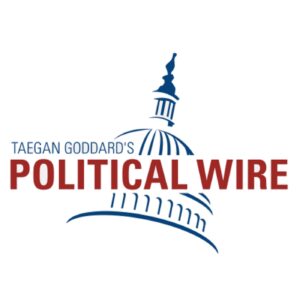Alberta-based Corinne, 69, wonders if her retirement financial savings will final


Alberta-based Corinne* has been fortunately retired for the final three years, however at 69, she desires to
be sure her retirement financial savings will final
and probably fund a retirement house till her loss of life.
Over the previous 10 years, Corinne has prioritized paying down debt and saving whereas additionally serving to her younger grownup kids pay for college, a down cost for a house and the acquisition of a brand new automobile. In the present day, she is a mortgage-free house owner and avid traveller, spending about $10,000 a 12 months on journeys. Whereas she describes herself as snug financially, since retiring she has had to attract down $15,000 a 12 months from her
registered retirement financial savings plan
(RRSP) to assist meet sudden bills and maximize contributions to her
tax-free financial savings account
(TFSA).
Corinne receives a complete internet revenue of $48,000. This consists of $20,800 in
(CPP) and
(OAS); $23,000 from an outlined profit pension plan that’s listed to inflation; and $5,000 from a
registered retirement revenue fund
(RRIF) that was transformed from a locked-in retirement account (LIRA). Her complete annual bills are: $43,350 (this doesn’t embrace TFSA contributions).
Corrine’s house is valued at $650,000. Whereas she is open to downsizing, the price of a apartment plus apartment charges in her desired space don’t signify a big financial savings.
Her funding portfolio consists of: $110,000 in money and money equivalents; $165,000 in a TFSA invested in Canadian fairness mutual funds; $320,000 in an RRSP invested in Canadian fixed-income mutual funds; $2,000 in
(GICs); and $53,000 in a LIRA invested in fixed-income mutual funds and Canadian widespread shares. She additionally has a complete life retiree life insurance coverage coverage from her employer valued at $10,000.
Whereas she has been working with a monetary planner from her financial institution, she acknowledges she doesn’t have a transparent understanding of investing. “Am I invested in the suitable investments? When ought to I convert my RRSP to a RRIF? What are the tax implications of drawing down funds from my RRSPs and the way do I keep away from any OAS clawback?”
Corinne can be involved about present financial circumstances, cost-of-living will increase and the devaluation of the Canadian greenback. “Ought to I minimize down on journey and solely price range for $3,000 yearly? Will I be capable of afford to maneuver into an assisted residing residence if crucial?”
What the professional says
Corinne’s concentrate on residing inside her means and paying down debt has positioned her in a snug monetary place and allowed her to be beneficiant together with her kids, offering an early inheritance, stated Graeme Egan, a monetary planner and portfolio supervisor who heads CastleBay Wealth Administration Inc. in Vancouver.
“Her pension revenue and Life Revenue Fund NOT MENTIONED IN QUESTION … RATHER “LIRA”? funds greater than cowl her residing bills, and Corinne’s investments – particularly her non-registered money account – can fund her annual $10,000 journey price range for the subsequent two years till the top of the 12 months she turns 71, when she is required to transform her RRSP to a RRIF.” At that time, her RRIF revenue ought to safely cowl journey and he or she shouldn’t have to make use of her money account for residing bills, Egan stated.
“Her minimal annual RRIF cost can be about $17,000 per 12 months (5.28 per cent instances $320,000 present stability) so that quantity added to her current revenue will carry her near the OAS clawback threshold of $93,000 with out exceeding it.”
Whereas the Canadian greenback could slip additional, Egan stated there isn’t a lot she will do besides maintain U.S. {dollars} or euros. “Having some non-Canadian fairness publicity ought to play some defence in offsetting a weak Canadian greenback.”
On the subject of her general asset combine, he advisable investing a portion of her RRSP in equities in order that her general combine is nearer to 40 per cent equities and 60 per cent mounted revenue — it’s extra conservative than this at current. “As she ages, her fairness combine ought to cut back to 30 per cent at age 75 and 20 per cent at age 80. Her mounted revenue is positioned in essentially the most appropriate account: her RRSP.”
To reduce her value of ongoing funding administration, Egan stated Corinne may contemplate exchange-traded funds (ETFs) as an alternative of retail mutual funds, which may have excessive administration expense ratios (MERs). ETFs usually have a lot decrease MER charges. “This can allow her to pay much less in administration charges yearly and assist to enhance long-term efficiency. She could need to open a self-directed TFSA and non-RRSP low cost brokerage account respectively at her financial institution’s low cost brokerage arm to spend money on ETFs. This can apply to her RRSP as properly if she desires to modify to low-cost fixed-income ETFs from fixed-income mutual funds. There are all-in-one asset allocation ETFs which offer a simple means for Corrine to self-manage.”
Her TFSA is generally Canada centered. Egan stated she may contemplate diversifying geographically by allocating one-third every to Canadian, U.S., and worldwide equities, noting that inventory markets outdoors Canada have carried out higher over the long run.
“Corinne may make investments the non-registered money stability of $110,000 in a high-interest financial savings account ETF whereas she waits to maneuver to a longer-term funding technique for this cash. Assuming she doesn’t want that a lot money in the long run, she may contemplate investing about 40 per cent of this cash in a dividend-producing ETF, which pays out month-to-month dividend revenue that’s tax efficient and offers extra revenue for her for journey functions and normal residing bills. A dividend-income producing funding automobile has the potential of appreciating in worth, too, when equities rise.”
As for the rising value of residing, Egan stated Corinne’s pensions (outlined profit, CPP and OAS) are all listed to a level to inflation. “Fairness investments have a tendency to trace or sustain with inflation, so solely her mounted revenue portion just isn’t listed.
“Trying down the highway, she is going to probably need to promote her present property to create the capital to generate revenue to have the ability to transfer into an assisted residing residence.”
Are you fearful about having sufficient for retirement? Do it’s worthwhile to modify your portfolio? Are you beginning out or making a change and questioning the way to construct wealth? Are you making an attempt to make ends meet? Drop us a line at wealth@postmedia.com together with your contact information and the gist of your drawback and we’ll discover some specialists that can assist you out whereas writing a Household Finance story about it (we’ll hold your title out of it, after all).
* Her title has been modified to guard privateness.
Bookmark our web site and assist our journalism: Don’t miss the enterprise information it’s worthwhile to know — add financialpost.com to your bookmarks and join our newsletters right here.







